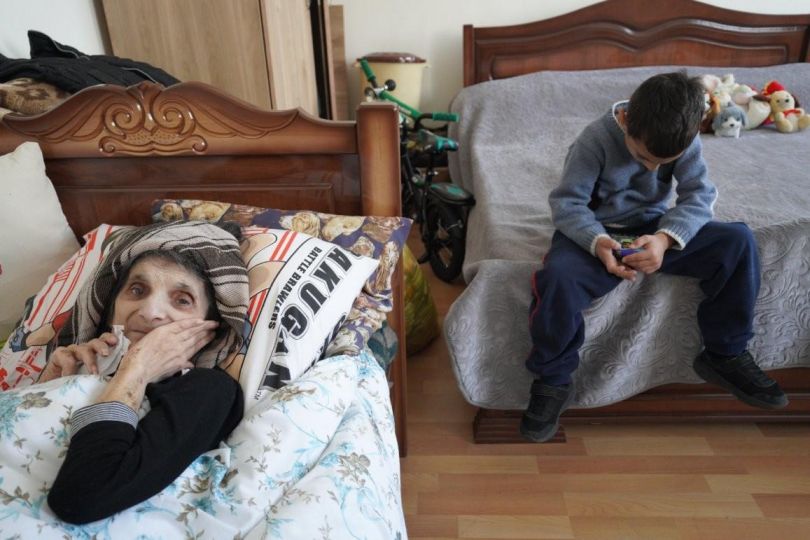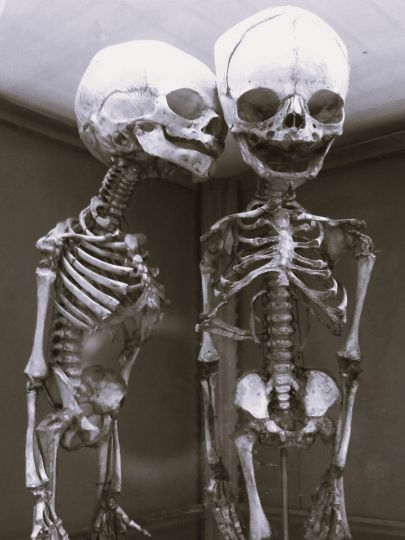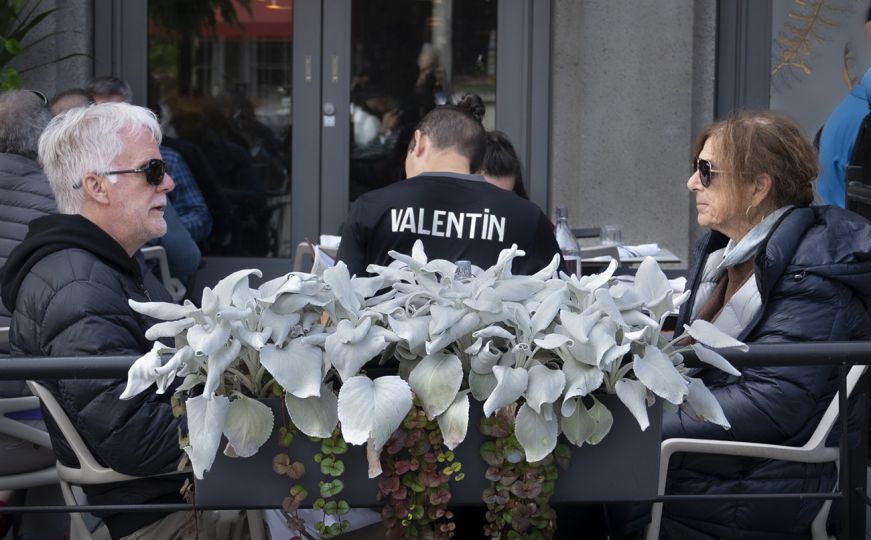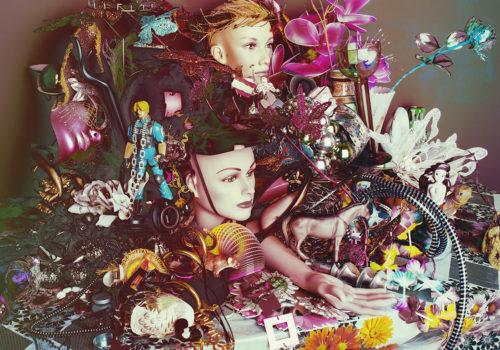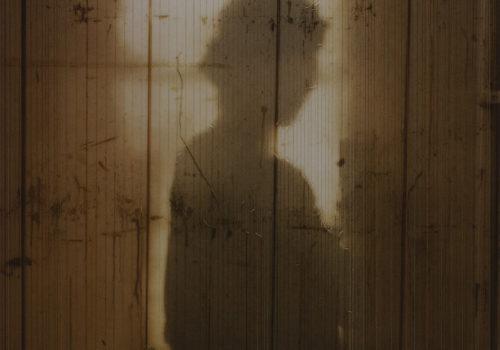This series is part of a wider body of work that rotates around the ‘Third Sex’.
It’s the first part of a worldwide project which through personal insights stories and intimate realities will document the contemporary world of transgenderism and intersexism .
My Dearest Javanese Concubine is based in Muslim Indonesia and it tells us about the life of Tira and Gunawan.
Tira was a pre-op 48 years old transgender disfigured by repeated surgical operation, Gunawan an outcast street boy with no family and no job .
They met each other many years ago while working on the streets of Jogiakarta, Central Java and since then they have shared everything: their dwelling, their pains, their hopes. Their illnesses.
They live in a squatted courtyard near an airport, just off a very busy junction, battling everyday through poverty, inequality, abuses, intolerance and sickness, but still managing to taste blissful moments of tenderness and glances of happiness.
Through their dramatic life- through their pains and their escapes – my intention is to challenge our modern concept of love and beauty; and consequently the male-to-female gender binary system upon which our societies are built.
Beauty is nothing more than a convention. An illusion established by an educative sets of behaviours and models. We think something is beautiful just because there has been a precedent acknowledgement and formulation of it, which is then followed by its consequent acceptance. When something is unknown, or unaccepted it’s very likely to be considered ugly.
And Tira’s face and body are not execption. They aren’t habitual, her shapes are not within the accepted forms to which we are accustomed. Therefore the first reaction is that of disgust. Or fear. – an inevitable negative judgement or maybe that of a pathetic nature.
The full story of My Dearest Javanese Concubine give the viewers enough starting points for a reinterpretation of the meaning of beauty and love. Its images hit the viewers with a disconfort that inevitably forces to query the right basis of our established knowledge.
Another element in this story is the connection between love and death. This is a constant throughout the whole series – Gunawan is aware of Tira’s HIV but he has unprotected sex with her. He stopped minding about it and gave himself up to the consequences. ‘I let God decides’ he once told me . This could be seen as an act of idiocy or as the ultimate act of love. However I don’t think anyone has the right to judge.
To enter Tira and Gunawan world is to enter a place where there are no anchors, no comparisons, no judgements. Among all the dramas and pains their existence is a solemn proclamation of the true meaning of love.
During one of the first meeting Tira told me: “Luca, people don’t know what I am, and they don’t want to know…they just stop at the entrance and stay there, staring…staring at the surface.”
I had the privilege to enter Tira and Gunawan’s world, to go beneath the surface into a world made of pain, joy, intolerance, poverty, scars, prostitution, mortality and God. It was not an easy life, but it was one where Tira and Gun still managed among all the drama to retain a joie de vivre. In that small space that they call their home, it doesn’t matter if people don’t see them or can’t accept who they have become because in that four square meter microcosm, they can be themselves.
There the caustrophobia loses its confinement and becomes an endless reach. Life in those four square meters is devoured savagely. They fought, played, ate, enjoyed, loved, sang, prayed, danced, had sex and got drank. That was the real world, the rest, what was happening outside, was only background chatter.
Their drama is touchable. You can smell it, hear it, touch it.
My Dearest Javanese Concubine is the story of that drama, a story where people who are seen as marginalised misfits or outsiders become modern heroes, heroes who have struck a pathway through what we regard as normal and accepted, a love story that shows us that love can be a bond that rises against everything.
In memory of Tira Yohanes Soepomo, October 17, 1967, – May 31, 2011
Luca Desienna is an award-winning photographer based in London. He received many awards such as the Px3 ‘People’s Choice Award’ in 2010, 1st Prize Winner at Simulacrum Photo Contest judged by Richard Billingham, 1st Prize at Meet My World photo contest and an official selection at VOIES Off 2011. In addition he was shortlisted for the Photographers’ Master Cup, he receievd an Honourable Mention at the 2011 LENS CULTURE Exposure Awards and the Spider Black and White Award 2008, he was also selected as a finalist at the Best of Photography Annual 2008, and shortlisted for the 2008 Travel Photographer of The Year. In 2012 he’s also been nominated at the prestigious European Publishers Award for Photography.
His photography appeared in magazines such as The British Journal of Photography, Vanity Fair, Intelligence in Lifestyle, Kult Magazine, Vanidad, Genis Aci, Eyemazing, No Name, a-n, Gomma, XL, VICE and Time Out.
He exhibited throughout Europe and have been taken part to numerous Art Fairs and collective exhibitions, including the FOTO8 Summer Show and the Padova Art Fair.
In addition, he juried various awards, such as the Photolucida Critical Mass and the Crestock Photo Contest.
Among his recent job highlights Luca was the Ad campaign photographer for Diesel U Music 2009/2010 and has been the editor of Gomma Magazine from 2004 to 2007.
Luca is currently working on his first book titled: My Dearest Javanese Concubine.
In addition Luca is the co-owner and Chief Editor of Gomma Online and Gomma Books Ltd, respectively a popular online portal for photographers and a bijou publishing house specializing in high quality collectible photo books. Gomma was established in 2004 and for a few years it also run an acclaimed photography magazine. Luca is also the brains behind MONO, an hardback photo book showcasing the best contemporary black and white photographers ( to be published in fall 2012).








